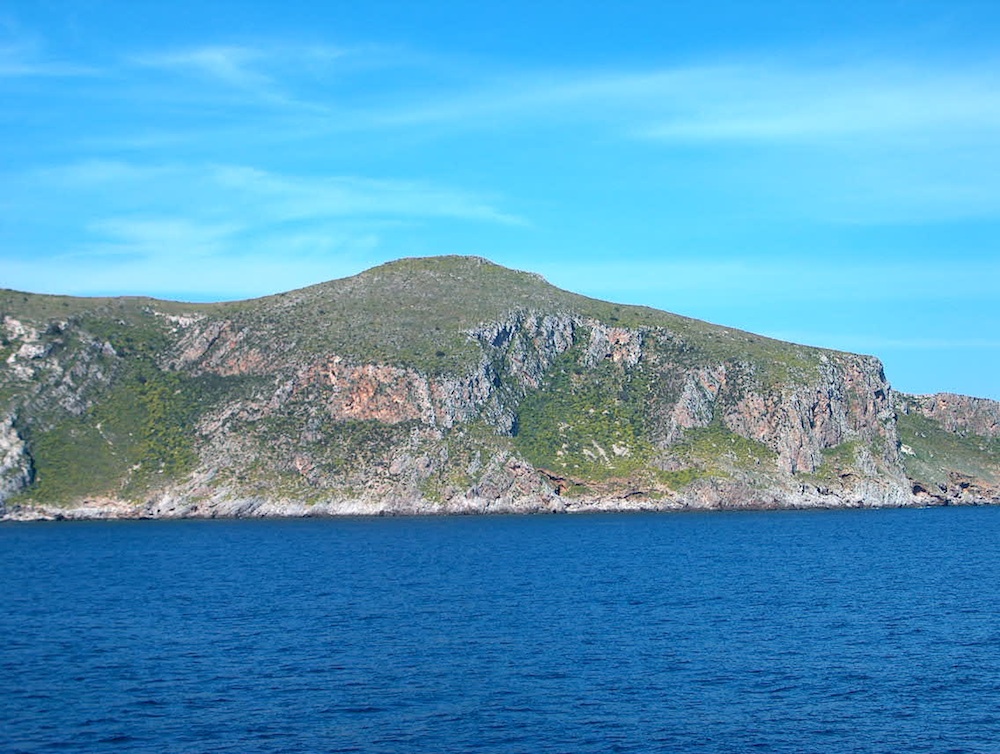Prehistoric Skeletons Reveal First Sicilians Avoided Seafood

Despite a seaside home overlooking the Mediterranean, the very first human settlers of Sicily weren't seafood lovers, new research finds.
In an analysis published today (Nov. 28) in the journal PLOS ONE, skeletal remains of the people who occupied the site around 10,000 years ago show no telltale signs of seafood eating. Instead, researchers say, these hunter-gatherers chowed down on game such as deer and boar.
These first settlers, found on the modern-day island of Favignana, which was once connected to Sicily by a land bridge, probably ate little seafood for two reasons, said study researcher Marcello Mannino, a scientist at the Max Planck Institute for Evolutionary Anthropology in Germany. First of all, the Mediterranean is relatively nutrient-poor — there just aren't that many fish in the sea. Second, these Mesolithic people likely didn't have the technology to do much fishing.
"The fact that these hunter-gatherers did not develop sophisticated fishing technologies in response to sea-level rise suggests that the potential returns of doing so were insufficient and that their population numbers were probably low," Mannino told LiveScience. [Top 10 Mysteries of the First Humans]
Studying skeletons
The skeletal remains were first found in 1972 by Giovanni Mannino; they're now kept in museum collections around Italy. Mannino found the remains in a cave called Grotta d'Oriente on Favignana. Many of the remains are just scattered bone fragments, but at least three distinct individuals have been discovered: an adult male, represented only by a few skull fragments, an incomplete jawbone and a line of perforated shells that may have been a necklace; an adult female, nearly a complete skeleton, also wearing a necklace; and a second adult female, represented by the upper half of a skeleton.
Mannino and his colleagues analyzed these remains in order to date them and uncover their origin and diets. They extracted DNA from the bones — often an unsuccessful proposition, Mannino said — and tested the bones for isotopes, or molecular variations that can record the types of fooda person ate in life.
Sign up for the Live Science daily newsletter now
Get the world’s most fascinating discoveries delivered straight to your inbox.
The researchers were able to successfully extract and analyze mitochondrial DNA from the remains. Mitochondrial DNA is located in the cells' energy-making structures called mitochondria and is passed directly from mother to child. Thus, mitochondrial DNA samples reveal an organism's maternal line.
"It showed us that our species only reached Sicily probably around, at the earliest, about 24,000 years ago, which is the time of the last glacial maximum, a time when probably for a very short period, Sicily was actually connected to the mainland through a land bridge exposed by the fact that sea levels were lower," Mannino said.
The DNA further suggested these early Homo sapien settlers likely had ancestry in the Near East and Caucasus regions, the researchers wrote.
A terrestrial diet
The isotope analysis revealed these Sicilian settlers ate mostly terrestrial meals, with less than 10 or 20 percent of their diets made up of seafood.
Other research on early Mediterranean humans suggests this diet was typical for the region, Mannino said. Humans living along the Atlantic coast of Europeduring the same time period, on the other hand, often had diets made up of 80 to 90 percent seafood, he said.
"In prehistory, marine resources were never really exploited intensively by humans living in the Mediterranean basin," Mannino said.
Follow Stephanie Pappas on Twitter @sipappas or LiveScience @livescience. We're also on Facebook & Google+.

Stephanie Pappas is a contributing writer for Live Science, covering topics ranging from geoscience to archaeology to the human brain and behavior. She was previously a senior writer for Live Science but is now a freelancer based in Denver, Colorado, and regularly contributes to Scientific American and The Monitor, the monthly magazine of the American Psychological Association. Stephanie received a bachelor's degree in psychology from the University of South Carolina and a graduate certificate in science communication from the University of California, Santa Cruz.









